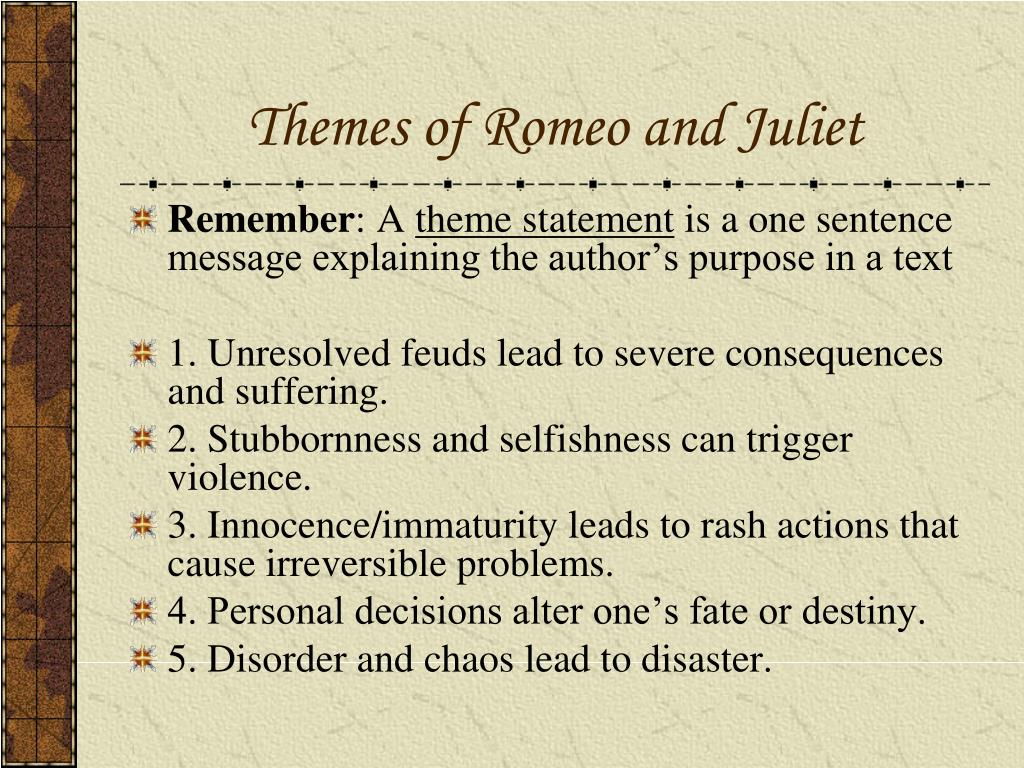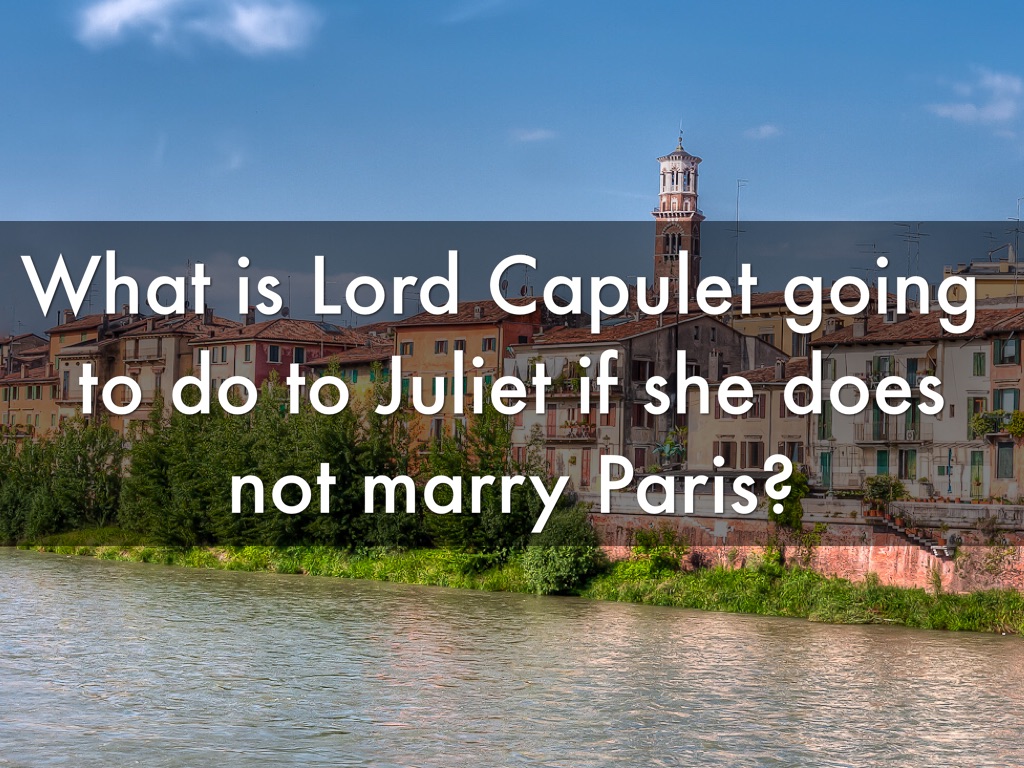

She agrees to marry him because she needs evidence that he is truly committed to her. Unlike Romeo, each of Juliet’s fateful choices is a logical response to a situation.

In the balcony scene, she compares their love to lightning, which flares up suddenly but can just as quickly fade into darkness. Though Juliet proves a strong-willed partner for Romeo, she bears less of the blame for their joint fate because she, at least, is wary of the speed at which they progress. Romeo never considers the implications of his acts, and his lack of foresight makes him liable for them. He then poisons himself, believing Juliet is dead. On the night they meet, he climbs over Juliet's wall and forces her to bind herself to him. Romeo, more than any other character, arguably propels the play more forcefully toward catastrophe with his rash acts. Shakespeare warns us from the start not to romanticize Romeo's unexpected bouts of passion-after all, Shakespeare makes it clear that Romeo's love for Juliet only replaced another, earlier infatuation. His rashness has made him a romantic symbol in our culture, but it proves to be his ruin in the play. Romeo's proclivity for hasty action lands him-and his beloved-in serious peril. It is suggested that either Romeo or Juliet could have stopped the onslaught of destruction at any of the numerous points. It's also true that the lovers aren't exclusively to blame for their unfortunate circumstances: their friends, families, and society all played a part in bringing about the tragedy.Įven if we accept that fate or some other divine force prompted Romeo and Juliet to fall in love at first sight, so initiating the action, Shakespeare makes it plain that the characters' own choices ultimately lead to the sad conclusion. Romeo commits suicide just as Juliet is about to awaken. Due to an untimely outbreak of the plague, Friar Lawrence's essential letter goes stolen. On Romeo's wedding day, Tybalt picks a fatal fight with him, prompting Capulet to speed up the wedding with Paris. True, Romeo and Juliet have had some extremely horrible luck.

These astral imageries are more frequently connected with the two lovers than with divine fate throughout the play, indicating that, as the drama progresses, we cannot simply blame the tragedy on some impersonal external force. Rather than using the picture of stars to convey Juliet's otherworldly beauty, he uses the image of stars.įrom Romeo's love-struck comparison of Juliet to the sun to Juliet's own wish to "cut out into little stars" when he dies, the play's subsequent heavenly images follow in the same spirit. When Romeo and his group approach the Capulet's ball in Act 1, scene 4, he expresses his concern about "some consequence yet hanging in the stars." Romeo, on the other hand, did not note the stars' astrological significance in his next reference to them.

Though the Prologue contains the play's earliest and possibly most renowned example of celestial imagery, references to the stars, sun, moon, and heavens appear throughout the play, and the imagery as a whole appears to reflect a new perspective on human responsibility. Despite the fact that Shakespeare's play suggests that Romeo and Juliet's lives are shaped by some impersonal, supernatural power, it is evident by the end of the play that the characters share more responsibility than Fortune. Many interpreters interpret this sentence to mean that Romeo and Juliet are destined to fall in love and equally doomed to have their love shattered. The Chorus in Romeo and Juliet's opening Prologue refers to the title characters as "star-crossed lovers," a reference to the concept that stars and planets have the power to influence events on Earth.


 0 kommentar(er)
0 kommentar(er)
